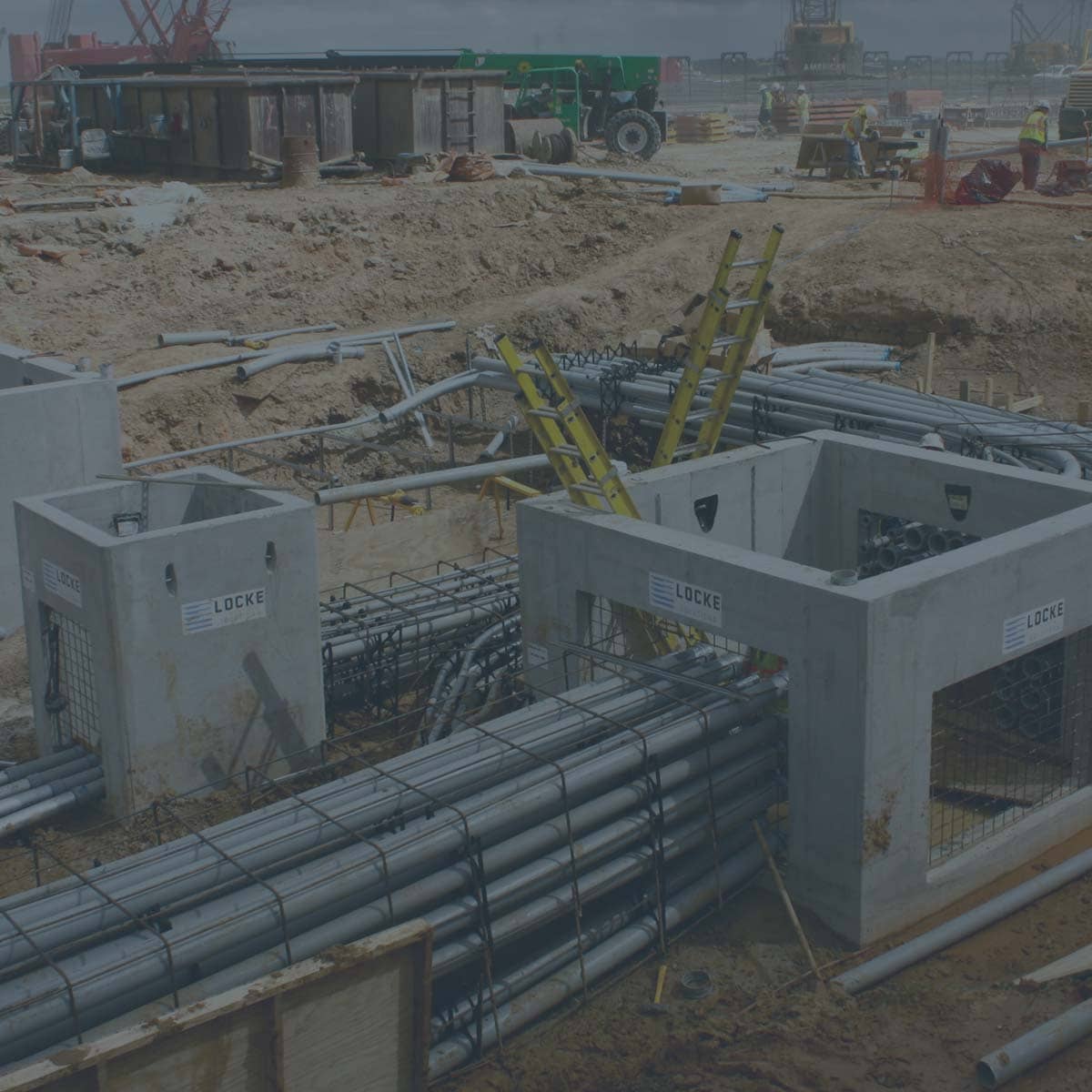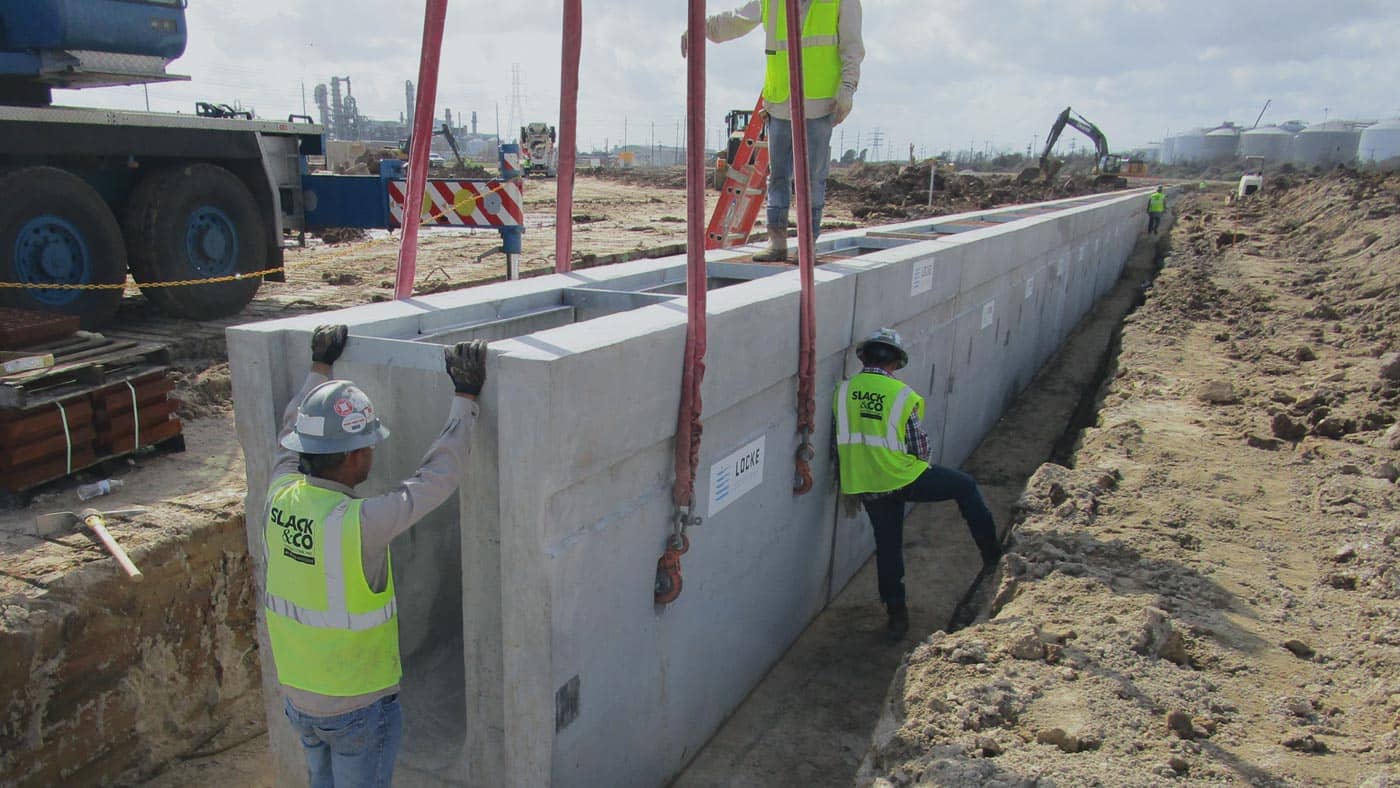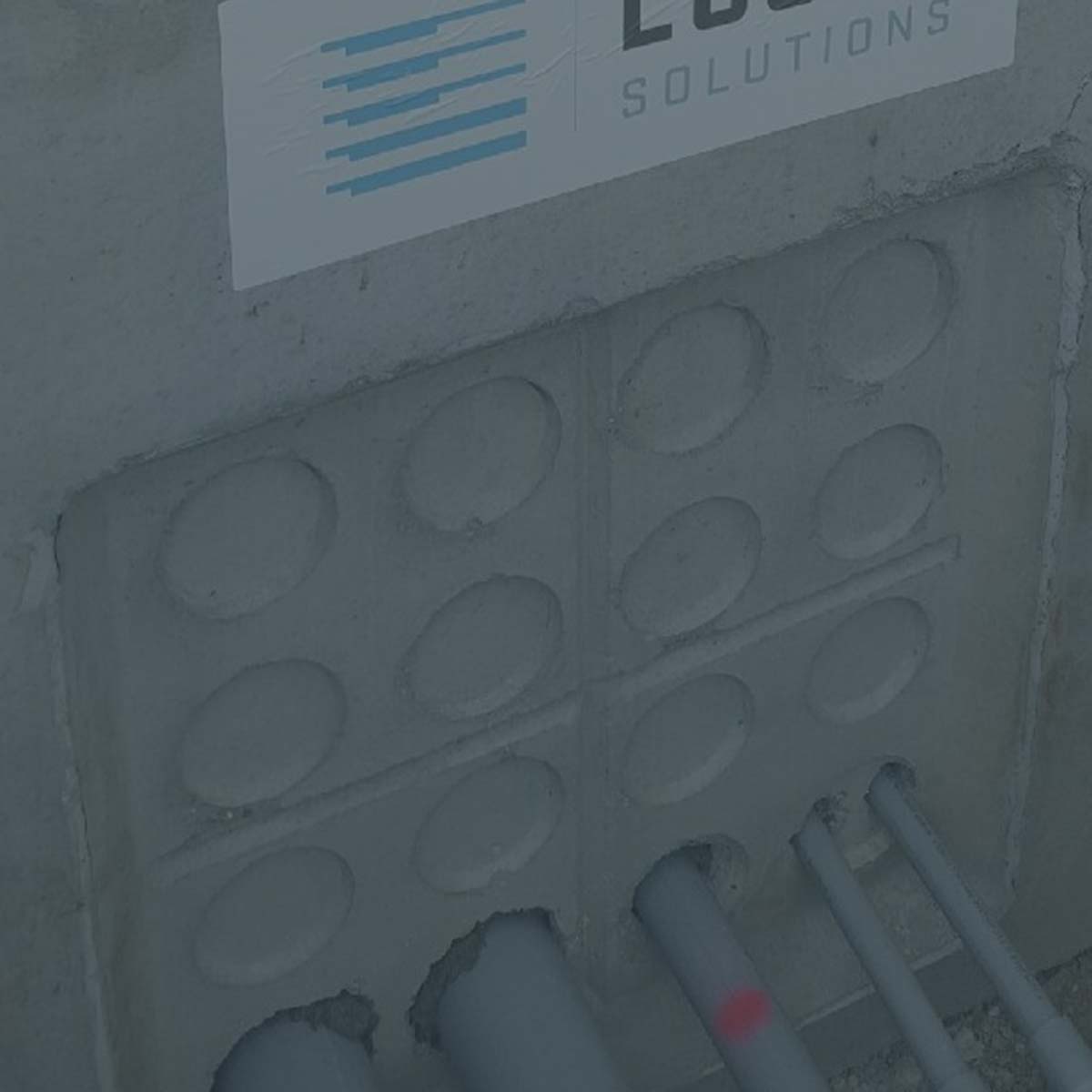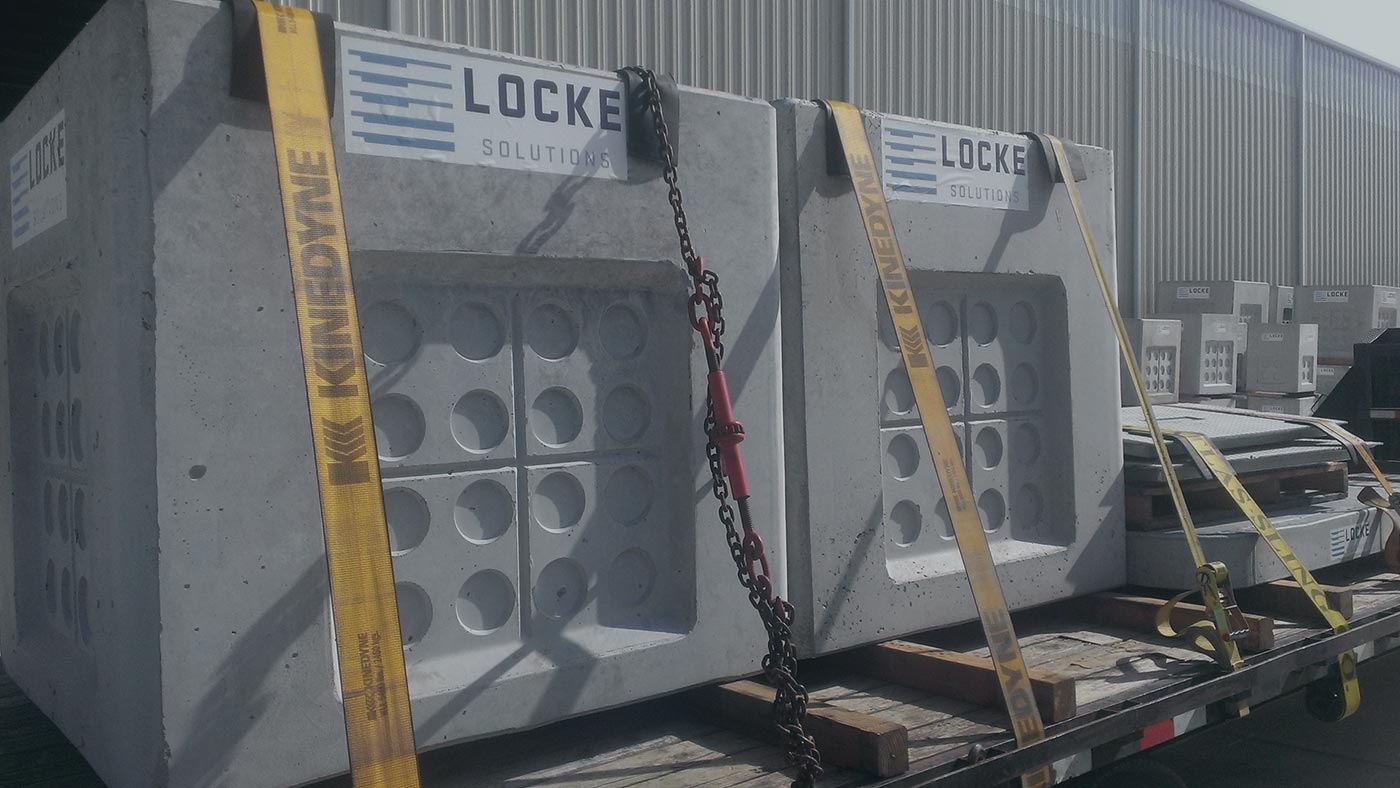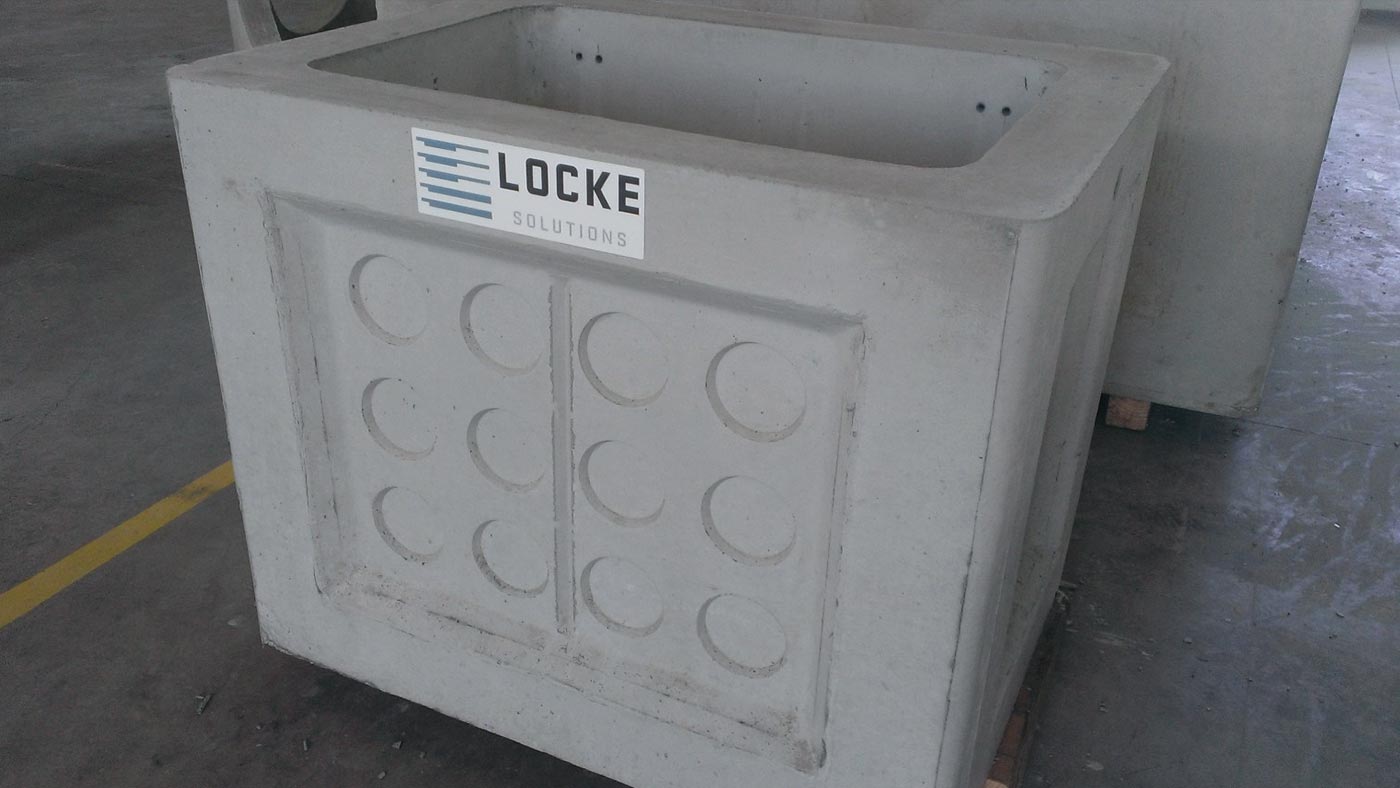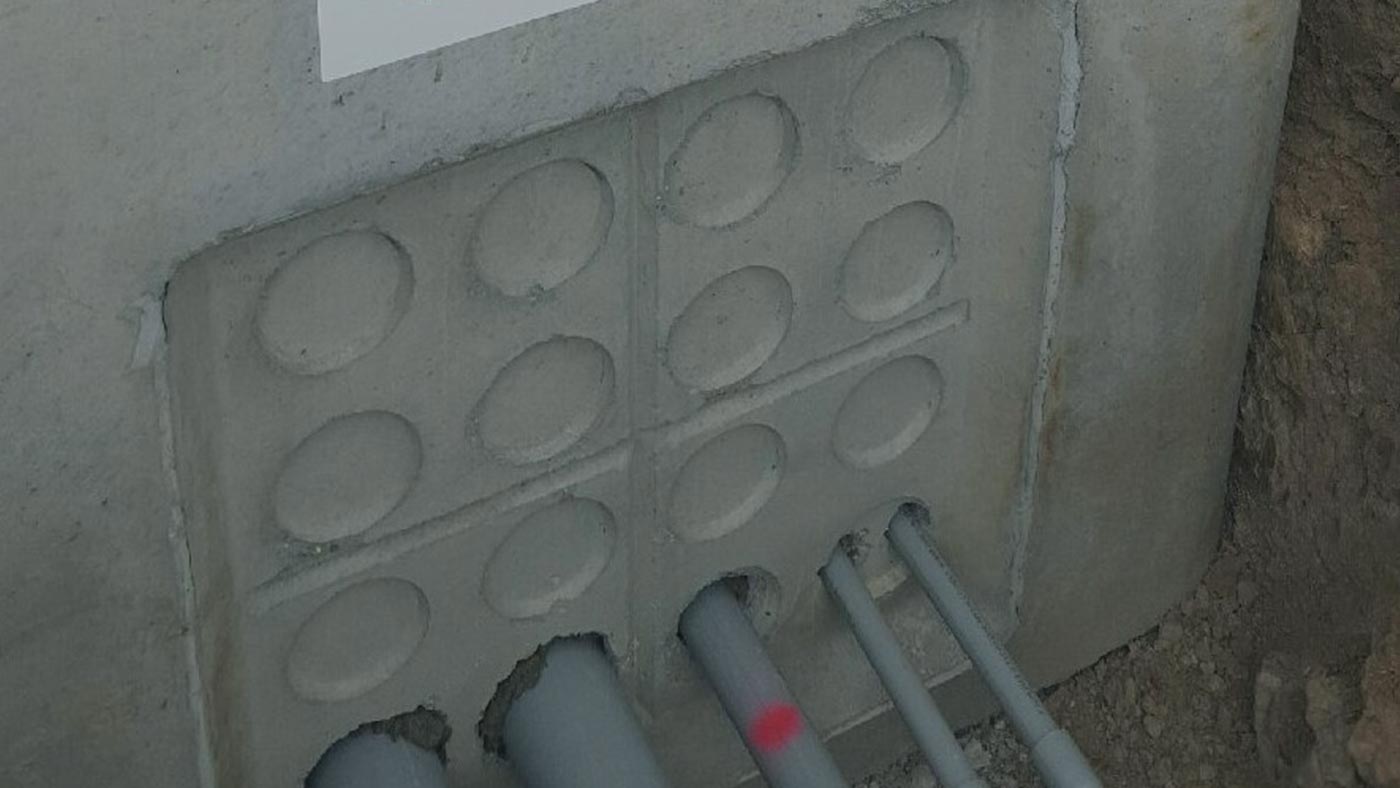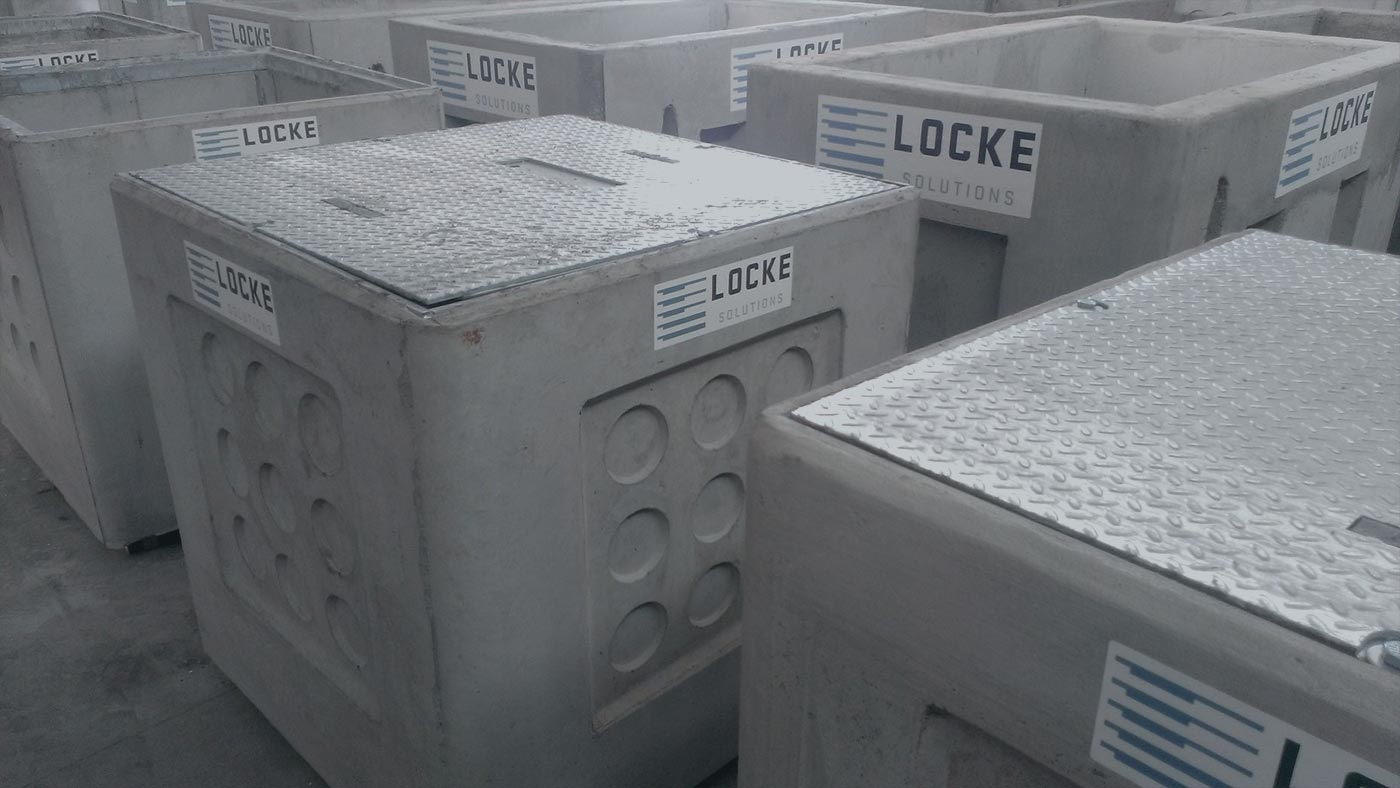Heavy duty traffic loading poses many challenges in underground infrastructure construction these days.
Whether expanding terminals at airports, upgrading marine port crane and wharf systems, or industrial sites anticipating large rolling equipment needs, it requires a fundamental understanding of structural design and being able to anticipate potential heavy-duty loading conditions.
“From early on in Locke’s history, we’ve seen many of our contractor partners gravitate towards us to help develop precast concrete substitutes for highly complex and engineered concrete structures at marine port facilities.” says Asher Kazmann, President of Locke Solutions.
Among the various structures, concrete trench drains, power manholes, and communication handholes rank at the top of the list of underground utility structures needed. “Most projects start with an old cast-in-place specification of concrete manholes and trench drains,” notes Kazmann. “These structures typically have a dense web of reinforcing steel packed into thick concrete wall sections in order to provide the required structural capacity to withstand the massive forklifts, cranes, and non-stop traffic normally associated with busy port locations.”
More and more contractors are gaining experience utilizing precast concrete to speed up their project duration while reducing their safety and weather risks. “Although precast concrete manholes and inlets have become the norm for highway and residential construction, more complex projects such as airports and marine port facilities are slower to jump on the prefabrication trend,” explains Kazmann. “With complex loading conditions, many engineers don’t realize precast is even an option to the old in-situ concrete construction methods.” This trend is slowly evolving as more and more precast manufacturers are developing the expertise to design and manufacture for these unique project conditions.
“After many years working with contractors and engineers in the marine port markets in Southeast Texas, Locke has developed a reputation for successfully converting numerous in-situ concrete structures to custom precast. From concrete trench drains, power manholes, communication handholes, utility vaults, concrete docks, pier caps, and sumps, we have designed structures to handle some of the most intense equipment loads in extreme salty conditions along the coastline.” states Kazmann.






